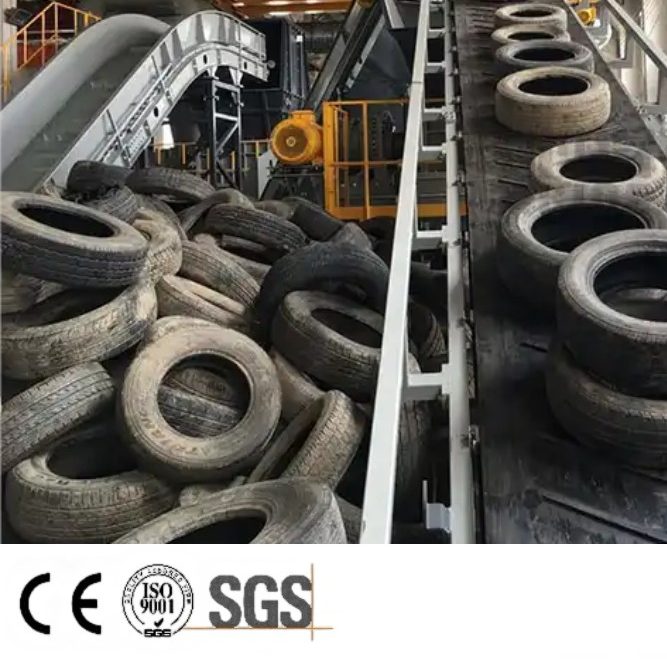Environmental protection recycling equipment for waste tires with high purity steel wire recovery
The disposal process of waste tire shredding and granulating equipment plays a pivotal role in the current field of environmental protection and resource recycling. Waste tires, as a by-product of the automotive industry, have seen a steady increase in volume year after year, posing a significant threat to the environment. However, after being shredded and processed, these waste tires can be transformed into valuable recycled resources, not only achieving resource utilization but also playing a positive role in environmental protection.

The disposal process for shredded particles from scrap tires first involves tire classification and pretreatment. This step is critical because different types of tires vary in composition and structure, necessitating tailored shredding and processing methods for each type. Pretreatment primarily includes tire cleaning, cutting, and stripping to facilitate subsequent shredding operations.
Next comes the tire shredding process. In this stage, the scrap tires are fed into specialized scrap tire processing equipment, where they undergo two stages of shredding—coarse shredding and fine shredding—to break them down into particles of a specific size. The design and performance of the shredder directly determine the quality and output of the shredded particles. To ensure effective shredding, shredders are typically constructed from high-strength alloy materials and equipped with advanced shredding teeth and shredding chamber designs.
The crushed tire particles require further processing to remove impurities and foreign objects. This is typically achieved through screening and magnetic separation processes. Screening removes large particles and debris, while magnetic separation effectively removes metallic impurities from the particles. These processes ensure the purity and quality consistency of the tire particles.
After the above processing, tire particles can be further processed as needed. For example, they can be processed into rubber particles of different sizes for use in the manufacture of plastic running tracks, anti-slip mats, and other sports facilities. In addition, tire particles can also be used as additives for asphalt pavement to improve the pavement's wear resistance and anti-aging performance.
The disposal process of shredded tire particles not only achieves resource recycling but also drives the development of related industries. With technological advancements and market expansion, the application prospects in this field will become even more promising. For example, by improving the design and technology of shredders, shredding efficiency and quality can be enhanced; by developing new tire particle processing technologies and application areas, the market demand for tire particles can be further expanded.
In addition, the disposal process of shredded particles from scrap tires also has important social significance. It not only reduces the environmental pollution caused by scrap tires but also creates more job opportunities and economic value for society. At the same time, by promoting the concept of recycling scrap tires, public awareness of environmental protection and resource conservation can be enhanced, thereby promoting sustainable social development.

In summary, the disposal process of shredded particles from scrap tires plays an important role in environmental protection and resource recycling. Through scientific classification, shredding, processing, and treatment, scrap tires can be converted into valuable recycled resources, achieving optimal resource utilization and environmental protection. With the continuous advancement of technology and the expansion of the market, the application prospects in this field will become even broader, contributing more to the sustainable development of society.



